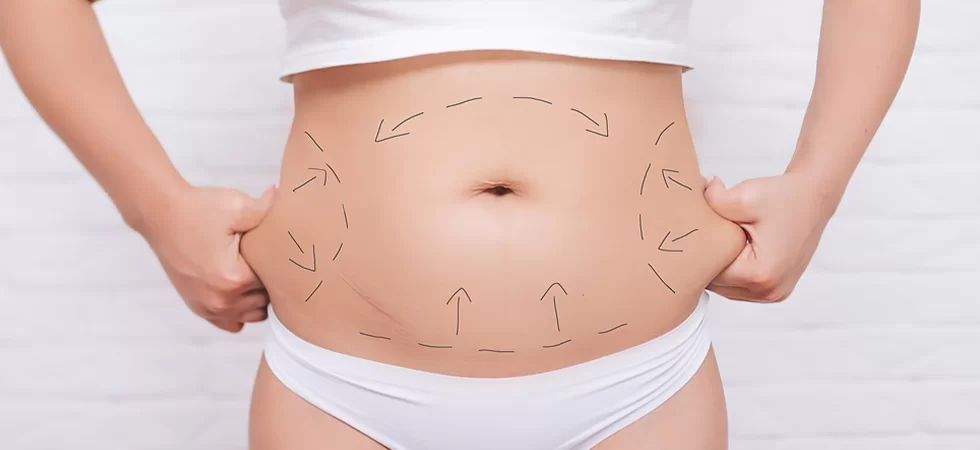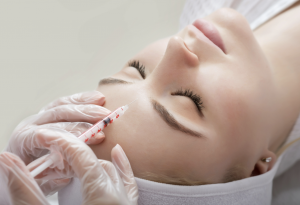Undergoing a full tummy tuck is a major decision for anyone looking to restore abdominal contour after weight fluctuations, pregnancy, or aging. The procedure, also known as full abdominoplasty, addresses both the excess skin and weakened abdominal muscles, offering a comprehensive approach to body contouring. If you’re considering a full tummy tuck Islamabad, understanding the procedure in a step-by-step manner will help you prepare both mentally and physically for the journey ahead.
This detailed guide will walk you through every stage of the process—from consultation to recovery—so you know exactly what to expect and how to achieve the best results possible.
Step 1: Initial Consultation and Assessment
The first step in your tummy tuck journey begins with a detailed consultation. During this session, your plastic surgeon will:
-
Review your medical history
-
Examine your abdominal area
-
Determine skin elasticity and fat distribution
-
Identify muscle laxity (often due to pregnancy or significant weight gain/loss)
-
Discuss your goals and set realistic expectations
You will also receive guidance on preoperative instructions, potential risks, and the specific type of tummy tuck suited to your needs (in this case, a full tummy tuck). Lab tests and health evaluations may also be ordered to ensure you are fit for surgery.
Step 2: Preoperative Preparations
Before surgery, you’ll receive specific instructions to ensure a safe and smooth procedure:
-
Stop smoking at least 6 weeks prior
-
Avoid medications or supplements that thin the blood
-
Arrange for time off work and post-op care
-
Maintain a healthy diet and hydration
-
Complete necessary lab work and imaging if requested
You will also be asked to sign consent forms and confirm understanding of the process, potential risks, and expected outcomes.
Step 3: Admission and Pre-Surgical Setup
On the day of surgery, you will be admitted to a surgical facility or hospital. The team will:
-
Verify your identity and medical records
-
Mark the surgical site for incision planning
-
Take preoperative photographs for comparison
-
Start IV fluids and administer anesthesia (usually general anesthesia)
Your vitals will be monitored closely to ensure a stable condition throughout the surgery.
Step 4: Administration of Anesthesia
Once inside the operating room, anesthesia is administered by a qualified anesthetist. General anesthesia ensures you remain unconscious and pain-free during the procedure. In some cases, local anesthesia with sedation may be used depending on your health status and the surgeon’s protocol.
Step 5: Making the Incisions
A full tummy tuck requires two main incisions:
-
Lower Abdominal Incision
A horizontal incision is made just above the pubic area, extending from hip to hip. This incision is placed low enough to be concealed by undergarments. -
Umbilical (Belly Button) Incision
A second incision is made around the navel to free it from the surrounding skin so it can be repositioned once the excess skin is removed.
The surgeon carefully plans these incisions to ensure minimal visibility and strategic placement for aesthetic balance.
Step 6: Separation of Skin and Fat Layer
The surgeon lifts the skin and underlying fat away from the abdominal muscles up to the rib cage. This allows access to the muscular structure of the abdominal wall, which is often stretched or separated due to previous pregnancies or substantial weight fluctuations.
Step 7: Muscle Repair (Rectus Diastasis Correction)
The next step involves tightening the abdominal muscles. If the rectus abdominis muscles are separated (a condition called diastasis recti), they are sutured back into a tighter, more anatomically correct position. This step:
-
Reinforces the abdominal wall
-
Flattens the stomach
-
Provides long-lasting structural support
Muscle repair is one of the core benefits of a full tummy tuck, contributing significantly to both functional improvement and aesthetic results.
Step 8: Removal of Excess Skin and Fat
Once the muscles are secured, the surgeon redrapes the skin over the abdomen. Excess skin and fat are trimmed off from the lower abdominal area. This step significantly improves the contour and smoothness of the stomach.
In some cases, minor liposuction may be performed simultaneously to refine the flanks or upper abdomen for more balanced results.
Step 9: Repositioning the Navel
Since the skin above the belly button has been pulled downward, the original navel would appear unnaturally low. A new opening is made for the belly button, which is then brought through and sutured into its new, natural-looking position.
The goal is to preserve the original navel while achieving a proportionate and aesthetically pleasing appearance.
Step 10: Insertion of Drains (If Necessary)
Small drainage tubes may be inserted under the skin to prevent fluid accumulation (seroma). These are typically temporary and are removed within the first week post-surgery. Not all patients require drains; some surgeons use advanced techniques to avoid them.
The use of drains will be discussed during your consultation, and you’ll be advised on how to care for them at home if needed.
Step 11: Wound Closure and Dressing
The incisions are closed in layers using absorbable sutures and sometimes surgical glue or staples. Special care is taken to:
-
Ensure tension-free closure for faster healing
-
Minimize scarring
-
Align skin edges precisely
After closure, sterile bandages and a compression garment are applied to:
-
Reduce swelling
-
Support the healing tissues
-
Improve contour during recovery
Step 12: Immediate Postoperative Recovery
After surgery, you’ll be moved to a recovery room where nurses monitor your vital signs and overall condition. You may experience:
-
Mild to moderate pain (managed with medication)
-
Grogginess from anesthesia
-
Initial swelling and bruising
Most patients are discharged the same day or stay overnight for observation, depending on the extent of the surgery and individual health conditions.
Step 13: First Week After Surgery
During the first 7–10 days:
-
You’ll need help with daily activities
-
Pain and swelling peak in the first few days, then gradually subside
-
Drains (if placed) are removed within a week
-
Stitches (if non-dissolvable) are removed between 7–10 days
It’s essential to:
-
Wear your compression garment at all times
-
Avoid bending, lifting, or straining
-
Follow your surgeon’s wound care instructions
Walking lightly around the house is encouraged to prevent blood clots.
Step 14: Weeks 2–4 Post-Op
Swelling continues to decrease, and mobility improves. During this time:
-
Light activities and desk work may resume (if approved)
-
Compression garments are still worn most of the day
-
Avoid heavy lifting, exercise, or twisting movements
It’s also important to continue monitoring the incision site for signs of infection or fluid buildup.
Step 15: One to Three Months After Surgery
Most patients see a significant reduction in swelling and can appreciate the early results of their tummy tuck. By this time:
-
Scars begin to fade and flatten
-
The belly button settles into its new position
-
Core strength starts to return
Your surgeon may clear you for light physical activity, but you must still avoid high-impact workouts until given full clearance.
Step 16: Long-Term Recovery and Final Results
Complete healing takes up to 6 months, sometimes longer depending on your individual health and post-op care routine. Long-term recovery includes:
-
Resuming regular fitness routines (as advised)
-
Scar management with creams or silicone sheets
-
Ongoing healthy diet and weight stability to maintain results
Most patients achieve their final shape within 6 to 12 months. With proper care, results are long-lasting and can significantly enhance self-confidence and quality of life.
Conclusion
A full tummy tuck is a complex yet highly rewarding surgical procedure for those seeking a more contoured and toned midsection. The process requires thorough planning, expert surgical execution, and diligent postoperative care. From the initial consultation to final results, understanding each step of the journey helps patients feel confident and prepared.
By committing to proper preparation, following your surgeon’s instructions, and maintaining a healthy lifestyle, you can enjoy long-term aesthetic and functional benefits from a full tummy tuck in Islamabad.
- Step-by-Step Full Tummy Tuck Islamabad Guide
- Discover the step-by-step process of a full tummy tuck Islamabad procedure. Learn how it's done, what to expect, and how to prepare for optimal results.
- Full tummy tuck Islamabad
Related posts:
 Empowering Senior Living: A Comprehensive Look at Elder Care Services in India
Empowering Senior Living: A Comprehensive Look at Elder Care Services in India
 Inside the Mind of Jack Allen: Crafting Military Thrillers That Grip You
Inside the Mind of Jack Allen: Crafting Military Thrillers That Grip You
 Eye Hospitals in Visakhapatnam: Advancing Vision Care in Coastal Andhra
Eye Hospitals in Visakhapatnam: Advancing Vision Care in Coastal Andhra
 What Happens If I Stop Getting Anti-Wrinkle Treatments? – Learn
What Happens If I Stop Getting Anti-Wrinkle Treatments? – Learn
 Nature’s Wrap: Exploring the Biodegradable Packaging Revolution
Nature’s Wrap: Exploring the Biodegradable Packaging Revolution
 Dentist in Largo Florida – Expert Care with a Personal Touch at Blue Dental Largo
Dentist in Largo Florida – Expert Care with a Personal Touch at Blue Dental Largo
 What Are Common Myths About Laser Vaginal Tightening Treatment?
What Are Common Myths About Laser Vaginal Tightening Treatment?
 Trusted Clinics for Mounjaro Injectables in Islamabad – Guide
Trusted Clinics for Mounjaro Injectables in Islamabad – Guide







